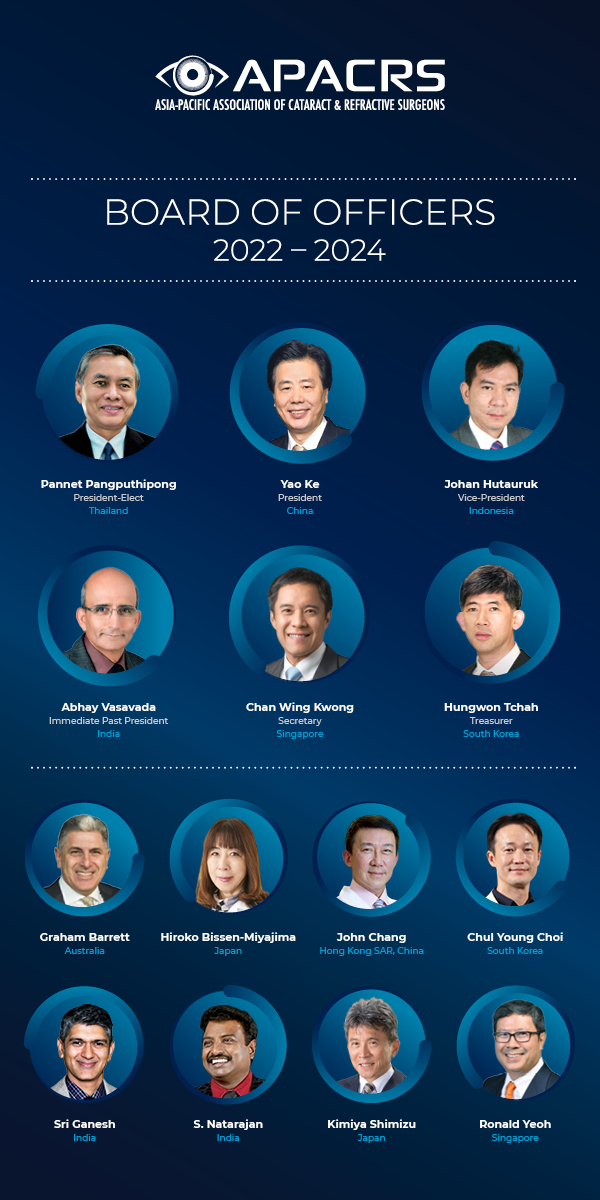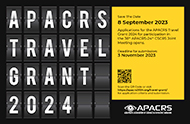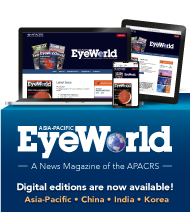Eyeworld Weekly Update |
Volume 21, Number 38 |
21 October 2016 |
- FDA approves Lucentis prefilled syringe
- ENV515 Phase 2 study suggests 9-month duration after single dose
- Positive top-line results from DEL MAR DME study
- Study: Phakic IOLs "effective" for people unsuitable for LASIK
- Bowman's layer transplantation shows promise in advanced keratoconus
- Modern technology, multi-screen lifestyles contribute to rising DED prevalence
FDA approves Lucentis prefilled syringe
The Food and Drug Administration (FDA) approved the Lucentis (ranibizumab) 0.5 mg prefilled syringe (PFS) as a new method of administering the medicine, said developer Genentech (South San Francisco). According to a press release, the 0.5 mg PFS is approved to treat people with wet age-related macular degeneration and macular edema after retinal vein occlusion. The Lucentis PFS is the first syringe prefilled with an anti-VEGF medicine that is FDA approved to treat two eye conditions. The Lucentis 0.5 mg PFS is expected to be available in early 2017.
ENV515 Phase 2 study suggests 9-month duration after single dose
An interim analysis of a Phase 2 trial in patients with glaucoma showed ENV515 patients (travoprost XR, Envisia Therapeutics, Research Triangle Park, North Carolina) sustained a meaningful reduction in IOP for the entire 9-month evaluation period following a single administration, Envisia said. ENV515 also demonstrated an IOP-lowering effect comparable to pre-study topical prostaglandin analogs (latanoprost and bimatoprost) and in-study topical timolol maleate 0.5% ophthalmic solution (daily eye drops). The ongoing Phase 2 trial is a 12-month safety and efficacy evaluation that enrolled five glaucoma patients at sites within the U.S. The pre-washout baseline for all patients in this cohort was 19.7 mm Hg, with a post-washout baseline of 26.1 mm Hg for 8 a.m. IOP. A single low dose of ENV515 decreased the mean IOP by 6.7±3.8 mm Hg or 26% over 9 months. ENV515 was well tolerated and there were no serious adverse events, no changes in corneal endothelial cell counts evaluated by an independent reading center, and no changes in corneal thickness.
Positive top-line results from DEL MAR DME study
The DEL MAR Phase 2b clinical trial evaluating Luminate (ALG-1001) in 136 patients with diabetic macular edema (DME) met its primary and secondary endpoints, demonstrating promising visual acuity gains and reduction in central macular thickness (CMT) that were equivalent to bevacizumab monotherapy, developer Allegro Ophthalmics (San Juan Capistrano, California) said in a news release. The primary endpoint of the DEL MAR Phase 2 study was non-inferiority to bevacizumab (defined as a ≤3-letter difference) in mean change in best corrected visual acuity (BCVA) at 20 weeks. The Luminate results were achieved after three injections and 12 weeks off treatment, compared to six injections given every 4 weeks with bevacizumab. The data showed the mean gain in BCVA was 5.2 letters for patients in the 1.0 mg Luminate arm compared to 7.0 letters for patients in the 1.25 mg bevacizumab arm. The secondary endpoint was non-inferiority to bevacizumab (defined as ≤30 µm difference) in mean change in CMT as measured by optical coherence tomography. At week 20, patients in the 1.0 mg Luminate arm showed a mean reduction of 77 µm 12 weeks off Luminate loading versus 104 µm in the 1.25 mg bevacizumab arm dosed every 4 weeks.
Study: Phakic IOLs "effective" for people unsuitable for LASIK
Researchers at Iran University of Medical Sciences followed 31 people over 5 years who had been implanted with phakic IOLs after being deemed unsuitable for LASIK, the American Academy of Ophthalmology (San Francisco) said in a news release. The researchers chose people based on a number of factors, including those whose vision was stable, who were not correctable with LASIK surgery and had no eye disorders, such as glaucoma or macular degeneration. Prior to the procedure, all of the people had 20/200 vision or worse and only 60% could achieve 20/40 with corrective spectacles or contact lenses. Five years after having the procedure, 57% (34 eyes) achieved 20/40 vision without the use of glasses or contact lenses, and 23% (14 eyes) achieved 20/40 vision with the addition of glasses or contacts. Additionally, 20% (12 eyes) of recipients achieved corrected visual acuity of 20/50 to 20/120 that related to underlying retinal problems but had better vision than before surgery. Further, the amount of endothelial cell loss decreased in those who received a newer design of phakic lenses beginning in 2014, said Javad Hashemian, MD, Iran University of Medical Sciences, Tehran.
Bowman's layer transplantation shows promise in advanced keratoconus
The 5-year results from 19 patients who underwent Bowman's layer transplantation for advanced keratoconus suggest the treatment improved recipients' vision and stabilized the disease in 90% of the eyes. Using Bowman's layer "appears to prompt the healing response," researchers at the Netherlands Institute for Innovative Ocular Surgery, Melles Cornea Clinic and Amnitrans EyeBank Rotterdam said in a paper presented at the 2016 American Academy of Ophthalmology meeting. They say the technique may enable those with advanced keratoconus to tolerate extended contact lens wear. After 5 years, disease progression was halted in 20 of the eyes (90%), patients' corrected vision improved to 20/200, and all patients could tolerate extended contact lens wear. The average best corrected vision with contact lenses held stable at 20/40 from pre- to postoperatively.
Modern technology, multi-screen lifestyles contribute to rising DED prevalence
The National Eye CARE (Current Attitudes Related to Eye Health) Survey has found nearly nine in 10 eyecare professionals (ECPs) (89%) think the modern, multi-screen lifestyle (i.e., everyday use of mobile, tablet, and computer screens) is responsible for a rise in dry eye disease (DED), and that the condition is becoming increasingly common. While women ages 50 and older are still most likely to be affected by dry eye disease, the use of modern technology is changing the face of the condition, and ECPs said DED is affecting younger adults at a growing rate. Other findings include 76% of ECPs report an increase in patients between the ages of 18 and 34 with dry eye symptoms compared with 10 years ago, and 87% say that in today's world, there is no typical type of dry eye patient. Among patients who were surveyed, 79% say they are more aware of "feeling their eyes" after viewing a screen and that using a screen is challenging as a result of their dry eyes (59%). The survey was conducted online by Harris Poll in July 2015 on behalf of Shire (Lexington, Massachusetts), and included more than 1,000 optometrists and ophthalmologists and more than 1,200 adults with dry eye symptoms (U.S. adults diagnosed with dry eye disease or experiencing dry eye symptoms who have used artificial tears within the past month).
- In patients with normal tension glaucoma (NTG) with progression that is disproportionate to their clinic IOP measurements, 24-hour phasing can reveal higher IOP spikes than those identified during typical office hours, according to V. Sood and colleagues. They evaluated 18 patients who were undergoing treatment for NTG, all of whom had undergone 24-hour IOP phasing during a 1-year period, using the Icare ONE rebound tonometer (RTONE, Icare, Raleigh, North Carolina). The mean peak IOP was significantly higher during nighttime phasing (15.78±4.8 mm Hg) compared with daytime phasing (12.83±2.7 mm Hg, P=0.0018) and clinic IOP measurements (11.8±1.6 mm Hg, P<0.0001). Following IOP phasing a change in management occurred in 10 of 18 patients (56%). In the majority of these patients, a peak IOP was identified during nighttime phasing compared with daytime phasing; this difference was significant (P=0.0090). There were strong correlations between the IOP measurements obtained with Goldmann applanation tonometer and RTONE (Spearman r values >0.60, P<0.001). The study is published in the Journal of Glaucoma.
- The American Academy of Ophthalmology Task Force (San Francisco) released a consensus statement about extended depth of focus IOLs, published in Ophthalmology. According to the Task Force, "With the advent of wavefront technology, our clinical understanding of human optics and visual performance allows IOL manufacturers to manipulate lens design to optimize our visual world. These specially designed extended depth of focus lenses use optics that increase depth of focus, potentially allowing better intermediate vision while minimally affecting distance vision. The tradeoff with use of EDF lenses is a reduction in distance image quality if the aberration magnitude is too large."
- The careful selection of unilateral myopia and bilateral use of high quality bifocal lenses can lead to high intermediate distance acuities that can exist with a large depth of field, according toSowmya Ravikumar, MD, and colleagues. In their study, a computational polychromatic model was used to simulate retinal images as seen through a pseudophakic eye of 10 subjects with a diffractive bifocal for a range of target distances. The emmetropic eye achieved best vision at infinity and near distance specified by the addition (add) power, while the myopic eye peak acuities were achieved at shorter viewing distances. Having one myopic bifocal eye had no effect on distance acuities. With a bifocal add of 2.20 D and 1.20 D of anisometropia, the binocular depth of focus was more than 3.00 D and provided binocular acuities of better than 20/20 throughout this range. For each target distance, the binocular acuities closely approached those of the better-focused eye. The study is published in the Journal of Cataract & Refractive Surgery.
 Licensed Publications |
Licensed through ASCRS American Society of Cataract and Refractive Surgery, 4000 Legato Road, Suite 700, Fairfax, VA 22033-4003, USA.
All rights reserved. The ideas and opinions expressed in EyeWorld Asia-Pacific Weekly News do not necessarily reflect those of the ASCRS�ASOA or APACRS. Mention of products or services does not constitute an endorsement by the ASCRS�ASOA or APACRS. Copyright 2008, EyeWorld News Service, a division of ASCRS Media. |




 EyeSustain Update
EyeSustain Update 2024 APACRS TRAVEL GRANT
2024 APACRS TRAVEL GRANT Digital EyeWorld
Digital EyeWorld VOL. 39 (2023), ISSUE 3
VOL. 39 (2023), ISSUE 3  Membership Information
Membership Information APACRS Principles of Preferred Practice
APACRS Principles of Preferred Practice